How do you stop cats pooing in your garden?
“Ohhhhh, for goodness sake. Not again!!”
If you’ve gone out in your garden and got that awful whiff of cat poo polluting your nasal cavities, you may well have turned the air blue with a mixture of disgust and frustration.
You may have trodden in it, your young children might have picked it up, your dog could have eaten it or you may have accidentally grabbed a handful while doing some work in your flowerbeds. Horrid!
Whatever your particular situation, disgusting dollops of cat poo have repeatedly appeared in your garden, and you want to stop that bloody cat from doing it again!
If this all sounds familiar then fear not, you’re in the right place. Cat faeces goes beyond mere annoyance, it can also be a health risk. So, it’s an issue that needs to be dealt with and stopped.
In this article, you’ll discover how to clean up cat poo safely and get effective advice on what you can do to prevent the intruding cat from repeating this disgusting behaviour in future.
Why do cats foul in other people’s gardens?
The problem pooing is commonly caused by a neighbouring cat. Or, even worse, several different cats from your local area.
They’ll trespass into your garden, squat in a flowerbed and concentratedly relax their sphincters onto your well-maintained borders. Then they’ll try and cover it up by using their back legs to kick a load of soil all over the place. It makes an absolute mess and often happens repeatedly in the same place each time.
In order to deal with this hugely irritating problem, it’s important to understand why cats like to use other gardens as a litter tray. It’s not because have a personal vendetta against you!
Territorial scent-marking
The most common reason cats poop in other people’s gardens is due to territory marking. Cats are naturally very territorial animals and spend much of their day patrolling, securing and defending their living spaces. This is just as true for house cats as it is for those who go outside.
Scent plays a very important role in a cat’s life and a cat will feel most relaxed and comfortable when its living environment smells of itself.
You will have seen a cat rubbing its face on the corner of a piece of furniture or against your legs. While this can be interpreted as cute and friendly behaviour, it also serves a definite purpose. The cat is deliberately depositing its scent on the things around it in order to feel secure. It creates a kind of smell-based comfort blanket.
Unfortunately in therms of your specific problem, scent also plays an important role in the way cats communicate with each other, particularly for establishing hierarchies.
The most dominant outdoor cats will go into other gardens and poo in order to leave a message for other cats that this garden is claimed.
If you don’t have a cat then your garden is fair game and up for grabs. The local cats will be engaging in a poo war, trying to see who can leave the freshest and smelliest deposit to show all the other cats who’s in charge.
If you’re a cat owner, a bossier local cat might be pooing in your garden to intimidate your cat. Your poor cat will be trying to defend itself by out-pooing its rival.
It’s brutal, poo-to-poo combat out there.
Disturbed home environment
However, it’s not always about World War Poo. There can be more sympathetic reasons for the problem you’re experiencing.
Cats are creatures of habit and are particularly sensitive to changes in their environment. They like stability, so a disturbance in their living space can cause cats stress and anxiety, leading them to seek alternative places for fouling.
Some common reasons why cats might suddenly feel stressed about their home environment are:
- A new pet, particularly a cat or a dog, has entered the home.
- A baby has recently been born (noise and chaos).
- A toddler has just started walking (grabbing and chasing).
- Work is being done on the house or garden.
- The garden has changed from grass to low maintenance paving.
- The owner is not providing a litter tray or suitable toilet facilities.
If you know something like this is happening in your neighbours’ home, this is a likely explanation as to why their cat is jumping over and using your lawn or flowerbeds as a toilet.
As there’s little you can do regarding how your neighbours’ look after their cats, below we’ll look at things you can do to humanely put them off entering your garden.
What are the dangers of cat poo?
The smell and inconvenience of a cat pooping in your garden is obviously irritating. However, even more serious is the fact that cat poo can contain germs that, in some cases, cause considerable illness in humans.
While the risk of catching poo-borne diseases is quite low, it’s worth having an awareness of the two most common problems that can arise from being in contact with infected cat poo.
Cleaning up cat poo properly, and then taking steps to try and stop them coming back will considerably reduce the chances of anything being caught.
Toxoplasmosis
Toxoplasmosis is a parasitic infection that can be caught by humans from infected cat poo. A cat’s intestines provides the perfect conditions for the toxoplasma gondii parasite, which causes the infection. This means that an infected cat will shed the eggs of the parasite in their faeces.
Humans can catch Toxoplasmosis by accidentally ingesting these eggs, such as through direct contact with the poo, or by contact with contaminated soil, water or other surfaces. The most common cause of transmission is due to insufficient washing of hands after touching an area where cat poo is, or has been.
Many people have no symptoms if they contract toxoplasmosis, while others can experience flu-like symptoms, feeling achey and generally under the weather, before making a full recovery.
However, for pregnant women, the consequences of Toxoplasmosis can be much more serious, as they can pass on the infection to their unborn child. In certain cases, this can lead to congenital disabilities in the baby which is why pregnant women are advised not to empty a cat’s litter tray. People with weakened immune systems are also more susceptible to serious complications from Toxoplasmosis.
***Dogs can be infected and become very ill with Toxoplasmosis, but humans can’t catch it from their poo. Toxocariasis (see below) is the infection humans can catch from dog poo.
Toxocariasis
Toxocariasis is another parasitic infection caused by the larvae of roundworms belonging to the genus Toxocara. The two main species that can infect humans are found in both dog poo (toxocara canis) and cat poo (toxocara cati). Both animals shed the eggs of the parasite through their poop.
In terms of humans catching toxocariasis, we are more likely to be infected by infected dog poo, but transmission from infected cat faeces to humans certainly can and does happen.
Young children are the most at risk of coming into contact with the eggs of this roundworm due to their propensity for touching grass, soil and parts of the ground where the risk of accidentally inhaling the eggs are greatest.
Symptoms of Toxocariasis are commonly mild, including a high temperature, coughing and abdominal pain. However, in extreme cases it can cause blindness, enlargement of the liver and serious complications for those with compromised immune systems.
Worming treatments of cats and dogs, seriously reduces the problem, but as that’s obviously at the discretion of the owners, regular hand-washing and proper clean up is the best prevention method.
How to clean up cat poo safely
Let’s face it, clearing up after a cat has evacuated its bowels is no-one’s idea of a good time. However, in order to get rid of the disgusting smell and horrible germs, it helps to have the right tools to hand to make the job as painless as possible.
The items mentioned below will make the disgusting process of picking up, cleaning and disposing of the cat poo slightly less traumatic. It will also help you put a procedure in place so that you know exactly what to do and how to deal with it if it occurs again.
Always remember to throughly wash your hands afterwards!
Some of the products below contain affiliate links, which means this site may receive a small commission (at no extra cost to you) if you decide to make a purchase. Many thanks for using these links as it helps to keep this site running!
1. Biodegradable poop bags
Once you’ve spotted (or smelt) cat poo in your garden, the first thing you need to do is pick it up safely. If you don’t get rid of it, it will just sit there getting furry, and will probably be added to as the cat develops the habit of returning to that spot every time it needs the toilet.
The ideal characteristics of a good poop bag are:
- Long-handled, for ease of tying up.
- Slightly scented, to disguise the smell when picking up and within your dustbin (more on bins below).
- Biodegradable, so that when they go to landfill, the material will naturally break down into the earth.
Using a poop bag, you can turn it inside out, pick up the poo, then pull and tie the handles over the top without ever making contact. This technique is a real tried and tested way of dealing with animal poo. Indeed, you’ll have seen countless dog owners doing this very thing in your local park.
These earth-friendly poop bags [aff] tick all the relevant boxes that you’ll need to pick up and dispose of cat poo safely. With 300 in a pack, you’ll be well-prepared to ‘handle’ whatever the local cats leave for you.
2. Long-handled pooper scooper
If bending down to pick up the cat poo is not possible – whether that be for mobility reasons or simply because of the smell – you might find a pooper scooper with long handles very helpful. You can think of one of these as a dustpan and brush for poo.
Some useful characteristics to look for in a pooper scooper are:
- Telescopic handles, for adjusting the device to suit your height.
- A scraper and a rake attachment, for poop on all surfaces and of all consistencies.
- Removable attachments, for easy cleaning.
This pooper scooper [aff] fits the bill perfectly and will help with keeping you upright, whilst also ensuring you’re as far away from the poo as possible.
Once the faeces has been collected into the pan, you can tip the contents straight into the dustbin without getting near it. Alternatively, you can take a poop bag, stretch it over the pan and scrape the poo straight into the bag, before tying it up and throwing it away.
3. Outdoor cat poo dustbin
Many cat and dog owners choose to have a dedicated outdoor ‘poo bin’ in order not to mix up the household waste with their pet’s excrement. Scented poop bags really help but they’re not infallible, so you might still get a little whiff each time you open your regular dustbin.
Even if you’re not a pet owner yourself, you might want to consider having a small receptacle in which to temporarily place the intruding cat’s mess until your rubbish is collected. Depending on where you live, you might have a long wait before your next visit from the bin lorry.
It’s worth mentioning here that you shouldn’t put cat poo in your green garden waste bin or in your compost heap. Not only is there the risk of toxoplasmosis and toxocariasis, cats are meat eaters and carnivore poo doesn’t degrade very quickly. You also run the risk of attracting mice and rats, so it’s best to put it in the general waste.
This smart little dustbin [aff] has several features that make it perfect for the job:
- Lockable lid, for keeping odours to a minimum.
- Charcoal odour filter, for further reducing smells.
- Inner slide out container, for making emptying easier.
- Attached bag holder, for easy access to your poop bags.
- Top handle, making it easy to lift and move.
- Compact design, so it’s not too intrusive in your garden.
Let’s face it, the thought of picking up poo and storing it somewhere is obviously extremely unpleasant, but this is a device that at least makes it a bit easier to deal with.
4. Deodorising cleaner & disinfectant
Once you’ve removed the offending item(s), it’s important you go back to thoroughly clean and disinfect the area. This will ensure you destroy any germs that have been left behind, and you’ll also get rid of any lingering bad smells.
This FreshPet Cleaner & Disinfectant [aff] is specifically-designed to remove bacteria found in cat and dog faeces and urine, which is why it’s commonly used in catteries and kennels. It acts as a deodoriser too, with a huge range of fragrances available to suit your personal preferences. (The one pictured is ‘cut grass’.)
Cats poo on all types of surfaces – soil, paving, stones, decking, artificial grass – and the FreshPet Cleaner & Disinfectant is suitable for all, without leaving any nasty residue for pets to worry about.
5. Spear & Jackson pressure sprayer
A pump action pressure-sprayer is always going to be a useful gardening tool to have in your shed or garage, irrespective of its helpfulness with pooping cats.
Some common ways people use them include:
- General watering
- Humidifying greenhouse plants
- Gently misting very small plants
- Hydrating compost heaps
- Distributing liquid fertiliser
- Spraying foliar feed, plant feed or fungicides
- Cleaning down other garden tools
In terms of cat poo, a pressure sprayer will help you distribute your cleaner and disinfectant around the area of your garden that has been soiled, including in hard-to-reach nooks and crannies. If the area is quite large (like a patio or patch of artificial grass), the sprayer will make full coverage really easy.
A sprayer will also be useful if you’re planning to use a scented cat repellent to stop the cat from coming back to the scene of the crime.
This sturdy Spear & Jackson sprayer [aff] is a popular UK choice and actually won a Gold prize at the 2020 Great British Growing Awards! It comes with everything you need to do the job in your garden:
- Long wand, for accuracy in spraying and reaching awkward places.
- Adjustable nozzle, for regulating the amount of water flow.
- Shoulder strap, for moving around.
- 8 Litre capacity, not too heavy but also not requiring constant refills.
- Pressure release valve, a safety feature to prevent it from becoming over-pressurised.
- Solid and durable build, for withstanding regular outdoor use.
How to stop cats coming back to poo
Once you’ve cleared up and disposed of the cat poop, you’ll need to take steps to ensure the cat doesn’t keep coming back and creating the same problem.
Ultimately, it’s about breaking the cat’s habits and making it feel much less comfortable about entering and spending time in your garden. This is where using some good quality cat deterrents can really help you out.
You should have a think about what success means to you. You might simply be happy to stop a cat pooing in a particular flowerbed. Alternatively, you might only relax when you’ve eradicated any trace of a cat from your garden. (The former will be much easier to achieve than the latter.)
Cat poo is not the only objection people have to cats. It could also be killing birds, bullying of your own cat, driving your dog crazy, noisy stand-offs outside your bedroom window. There’a range of issues to potentially contend with.
Below we’ll look at the different types of cat deterrents and repellents available so that you can make an informed choice on what works for you and your garden.
Natural cat repellents
The idea of using a ‘natural’ cat deterrent in the garden initially seems quite appealing, evoking thoughts of being environmentally friendly, cost-effective and harmless. However, a lot of advice centres around citrus peels, coffee grounds or chilli flakes as possible solutions.
While cats certainly don’t like them, any positive impact these types of things will have on stopping a cat pooing in your garden is going to be very short-term. A heavy shower of rain will quickly wash the scent away, meaning you’ll have to take the time and effort to go outside and put more out.
Additionally, your actions might not be as harmless as you think and could have have other unintended consequences. The coffee and citrus might attract rats and mice, while chilli flakes can be very harmful if ingested by other wildlife such as hedgehogs or birds.
“We would not recommend using ‘homemade’ remedies or deterrents as their use may infringe legislation and regulations, particularly if it causes actual harm to the cat. In addition, the true negative or toxic effects of these remedies is likely to be unknown.“
The RSPCA
If you want to go natural, then there are a few plants you can incorporate into your garden that will help keep cats away.
Scaredy cat plant
a.k.a. Coleus caninus, Coleus canina, Plectranthus caninus.
A plant from the mint family, Scaredy Cat is about as natural a cat deterrent as you can get. It’s been used in gardens as a natural and aesthetically-pleasing way to deter cats for generations, due to its Eucalyptus-like smell.
It’s a perennial that’s easy to grow from cuttings, though if you want deterrent results quicker, it would be best to buy it as a fully grown plant [aff]. Once the plant has established, you can use cuttings to scatter around other areas in your garden to keep cats away.
Scaredy Cat is not a fail-safe solution as it can affect some cats more than others – it depends on the individual cat’s sensitivity to the scent – but it is generally effective.
It definitely ticks the ‘natural’ box, and looks attractive with luxuriant leaves and lavender-esque blue flowers in summer. Bees like it too, and they need all the help they can get at the moment.
Lavender
a.k.a. Lavandula, L. angustifolia
From a gardening perspective, lavender is fantastic. The purple flowers look great through the warmer months and it’s hardy and evergreen. Lavender is also relatively low maintenance, thriving best in gravelly soil that allows for drainage. The flowers have the additional benefit of attracting all kinds of pollinating insects too.
While humans find the smell of lavender very pleasant, the same can’t be said for cats. They don’t particularly like it and will keep away from areas where it’s planted. You can also take cuttings from an established plant and spread them around areas where cats like to poo.
Suffolk-based company, Thompson & Morgan, do a huge range of mail-order plants, including this English Lavender potted plant [aff] that comes ready-made to plant in your garden.
Rose cuttings
If you have rose plants in your garden, then a simple way of keeping cats out of flower is to place some of the cuttings down on the soil. The thorns will be unpleasant for the cats to walk on due to the sensitive nature of their paw pads, resulting in the cat avoiding the area.
If you don’t have any rose bushes in your garden, then the best-value way to grow them is by buying roses in bare root form (such as these Charisma Red Roses [aff] from Thompson & Morgan), and planting them in a suitable spot, preferably somewhere that they’ll get a few hours of sunlight a day.
Cat deterring spikes
Because it takes time and patience to cultivate plants that will eventually deter cats from pooing in flowerbeds, you might decide it’s quicker to buy something specifically designed for keeping cats away.
A popular way of stopping cats pooing or digging in certain areas is to install some plastic spikes. The pads underneath a cat’s paws are very sensitive, so making any surface spiky will make it too uncomfortable for the cat to walk on.
Creating awkwardness is the name of the game here, the spikes are not sharp enough to cause injury.
Prickle strips
For stopping cats pooing in small flowerbeds, vegetable patches, or on any other areas of soil, then prickle strips [aff] are a really effective option.
They’re rows of plastic spikes that you can peg into the soil to keep cats away from the area. The cat won’t want to walk on the prickle strips as it will feel too uncomfortable under foot. This will prevent the cat from pooing and digging on the affected area.
If you have a large area to protect then you might find the cat just poops next to where the prickles strips end. However, for quite small areas of open soil, these inexpensive and easy-to-install strips may well solve your problem.
Fence spikes
Cats are very athletic and they like walking along or jumping onto ledges in order to access gardens. If you think about how the trespassing cat comes into your garden, the chances are high that it comes in over a fence or a wall.
You can get heavy duty plastic spikes [aff] that are designed to be fixed to the top of fences, walls, flat roofs or any other flat surface a cat may use. Again, the spikes are uncomfortable to walk on and make the process of getting into your garden much more difficult.
If the cat is having a hard time actually accessing your garden, it will start to associate your garden with awkwardness and will likely choose to go elsewhere (that’s easier to navigate) to poo.
Cat repellent sprays
Sprays for repelling cats are popular for use in gardens because they’re inexpensive and easy to use. You spray the product, the cats don’t like the scent, so they stay away from the area. That’s the basic premise.
There are a range of cat deterrent sprays available that are suitable for use outside, so it can be a bit overwhelming to decide which one to get.
It’s always worth checking the ingredients list to make sure you’re happy with what the spray contains. Many contain synthetic products which are officially safe to use, but you might question whether you actually want to inflict them on the flora and fauna in your garden. This cat repellent spray concentrate [aff] contains all-natural essential oils that cats are averse to, such as peppermint and citronella, so it can be used safely without fear of harm. You just dilute a little with water and spray in the affected areas.
The main drawback with scented sprays is that the scents fade quickly, especially after rain. On the one hand, it’s reassuring to know that you’re not putting anything damaging into your garden, on the other hand, it’s frustrating the effect is not longer-lasting.
In the initial stages, you will need to be out spraying on a regular basis to ensure the scent remains strong. The cat may return to the spot several times before it gets the message, so you’ll need to be pro-active and on top of the situation to start with.
Ultrasonic deterrents
The deterrents mentioned above are really good at stopping cats from pooing in particular areas of your garden. If you’ve only got a small garden or a small problem area, then the solutions above might be all you need to get some relief.
However, what you might find is that you don’t have the time to spray something on a regular basis, wait for plants to grow or keep prickle strips clear of leaves and other garden detritus. When it’s dark, cold or wet, you probably won’t want to bother popping outside to do anything in your garden, even though the neighbourhood cats will still be active.
This is where a good quality ultrasonic cat deterrent can be really useful. These units can sit in your garden emitting high-pitched noises each time a cat walks in front of it. It doesn’t matter if you’re in or out or whether it’s day or night.
The ultrasonic noises are irritating (but harmless) to cats and can’t be heard by humans. These devices are an excellent, low-maintenance way of breaking a cat’s habit of feeling comfortable in your garden. Interrupting a cat’s normal behaviour and snapping it out bad habits is the best way to humanely force a cat to behave in a way you want it to. Ultrasonic cat deterrents do this really well.
The more a cat feels uncomfortable in your garden, the less time it will want to spend there. If it doesn’t want to spend time in your garden, it won’t want to hang around to poo or cause other annoyances.
The CATWatch Ultrasonic Deterrent
Installing an ultrasonic device to stop cats pooing in your garden is really useful if you’re looking for an effective, yet time-saving, option that you can just set and forget.
While there are an awful lot of ultrasonic repellers out there, a lot of them are cheaply made, with low-quality components that simply aren’t durable enough to withstand the wet British climate.
Fortunately, the CATWatch Ultrasonic Cat Deterrent is a high-quality device and the only one of it’s kind to be designed and manufactured here in the UK. It has been tested and approved by the RSPB as a device that will achieve positive results in reducing cat visitations to gardens.
“The CATWatch is proven to reduce the presence of cats in gardens and the deterrent effect increases over time.“
The RSPB
The CatWatch Ultrasonic Cat Deterrent is available in our store priced £69.95 and includes a 12 Volt mains adapter, full operating instructions, 90-day moneyback guarantee, 2-year manufacturer’s warranty and free UK delivery.
Cat Poo FAQs
Where should I throw cat poo?
The best way to dispose of cat poo is by putting it in a scented poo bag, tying it up securely and then putting it into your general waste. It should not go in your garden waste or into a compost heap.
Can cat poo go in the green bin?
No, your green wheelie bin or bag is for garden waste only. This includes things like grass cuttings, hedge clippings, leaves etc. It is not for cat poop, which can often contain germs. If you check your local council’s website, it will probably say that pet poo should not go in your green bin. Instead, bag it up in a poop bag and put it in your general waste.
Can cat poo be used as a fertiliser?
No, cat poo should not be used as a fertiliser on your flower beds and should not be put in your compost heap. Cat faeces can contain parasites (Toxoplasma gondii) and roundworm (Toxocara cati), which can infect humans, so you don’t want to be spreading it around you garden. Cats are also carnivores, so their poop doesn’t breakdown particularly quickly. Stick to putting cat poo in a poo bag and throwing it into your general waste.
Can cat poo go down the toilet?
No, cat poo should not be put down the toilet. Cat faeces can contain harmful parasites that the UK’s water disposal system is not designed to remove or eradicate. If your cat poops in a litter tray, some of that kitty litter going down the toilet on a regular basis will eventually cause a blockage, so avoid doing it. Instead, put the faeces in a scented poop bag and put it in your general waste.
Can cat poo blind you?
In very rare instances, it is possible for people who have come into contact with infected cat or dog poo to develop Ocular Toxocariasis. This is where the infection gets into the eye, potentially leading to vision loss or even blindness. It sadly tends to affect young children and mainly comes from dog poo, but infected cat poo can cause Ocular Toxocariasis too.
Can cat poo harm pregnant women?
Catching toxoplasmosis from infected cat poo when pregnant can, in some cases, cause serious problems to the unborn baby. The NHS recommends that pregnant women “wear gloves while gardening, and wash your hands thoroughly afterwards” and “avoid cat poo in cat litter and soil if you can, wearing gloves if you need to empty cat litter trays and washing your hands afterwards”.
Why do dogs eat cat poop?
There are a number of reasons why dogs might eat cat poo:
- Cats are carnivores so their faeces is high in protein and may taste good to the dog.
- The dog is not being fed enough and is hungry.
- The dog is deficient in a particular nutrient which it can get in the poo.
- The dog is young and just curious.
- The dog is bored.
FYI – there’s a word for the practice of eating poo: Coprophagia.
Can cat poo make dogs sick?
Yes, it can. Cat poo contains bacteria, so if your dog eats it then it could get an upset stomach. If the cat is infected with Toxoplasmosis, then your dog eating the faeces runs the risk of contracting Toxoplasmosis too. The best way to stop your dog eating cat poo is to remove the poop from your garden or the litter tray as quickly as possible. You can also give your dog a stern ‘no, leave it‘ command each time you catch them in the act.
Can cat poo kill plants?
No, it’s very unlikely plants will actually die due to be exposed to cat poo. However, cat poo should not be used as a fertiliser and should be picked up and disposed of quickly. This is due to the bacteria that some cat poo can contain (such as Toxoplasma gondii), which will not harm your plants but could cause you to be ill if you accidentally ingest the parasite.
Cat urine, on the other hand, can cause damage to your lawn due to it containing high levels of nitrogen and uric acid. The urine can ‘burn’ grass, which leaves yellow patches on your lawn.
Can I throw cat poo back over my neighbour’s fence?
No, absolutely not. This could be seen as anti-social behaviour and could possibly even lead to a fine. No matter how frustrating it is, you cannot do this. Sometimes, cats poop in other people’s gardens simply because their owner has not provided a litter tray. Have a gentle word with your neighbour to try and resolve the issue. Otherwise, install an ultrasonic cat deterrent or some poo-preventing scat mats in the worst-affected areas.

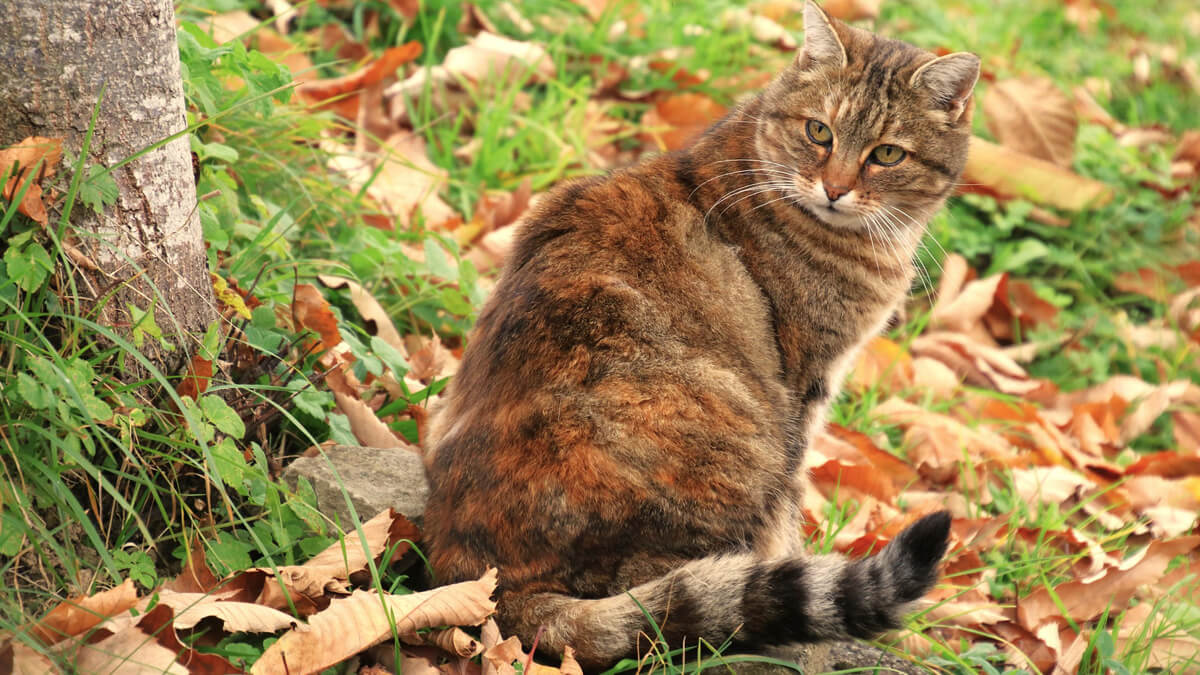
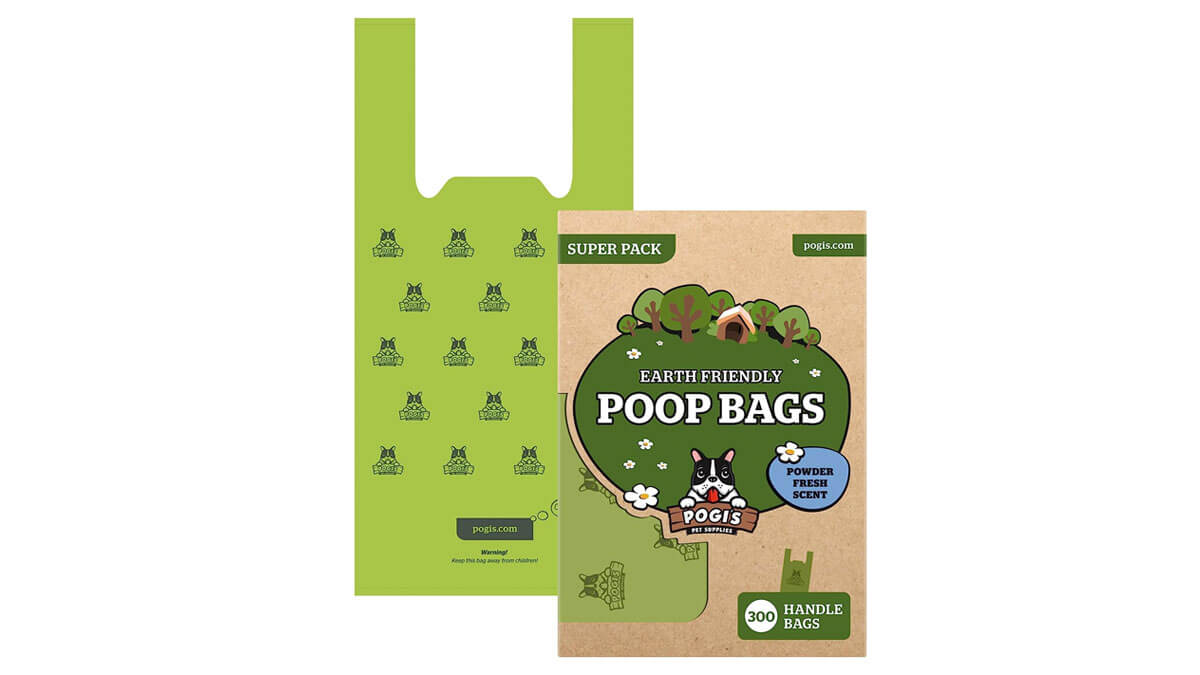
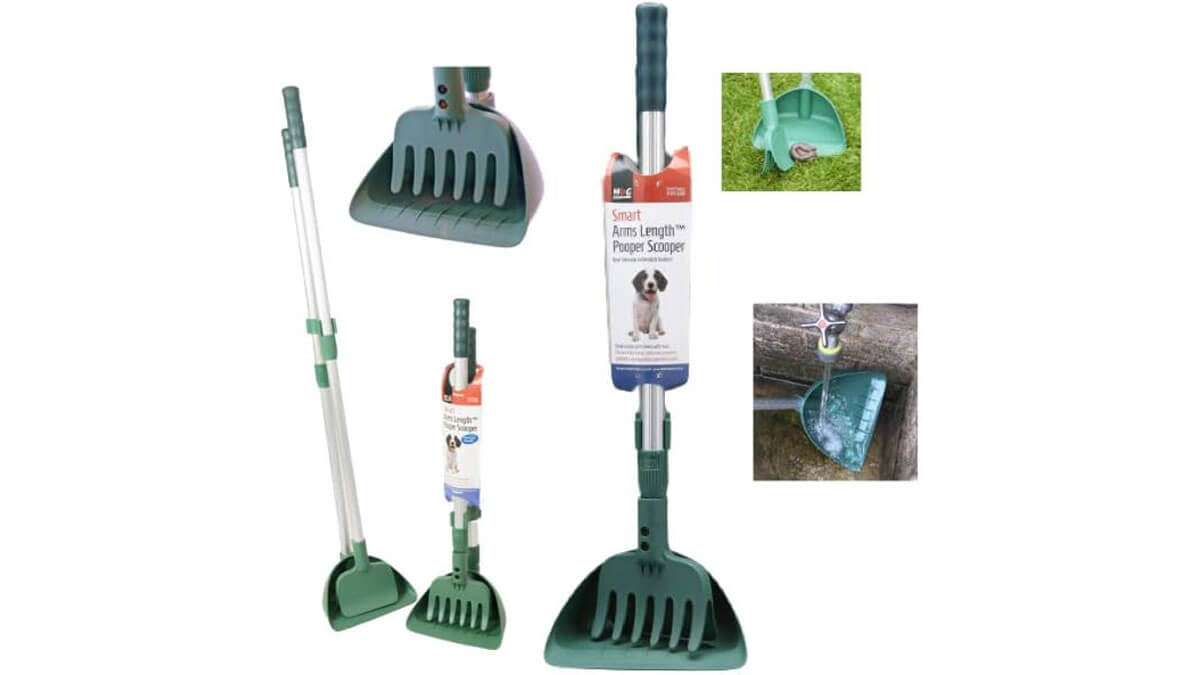
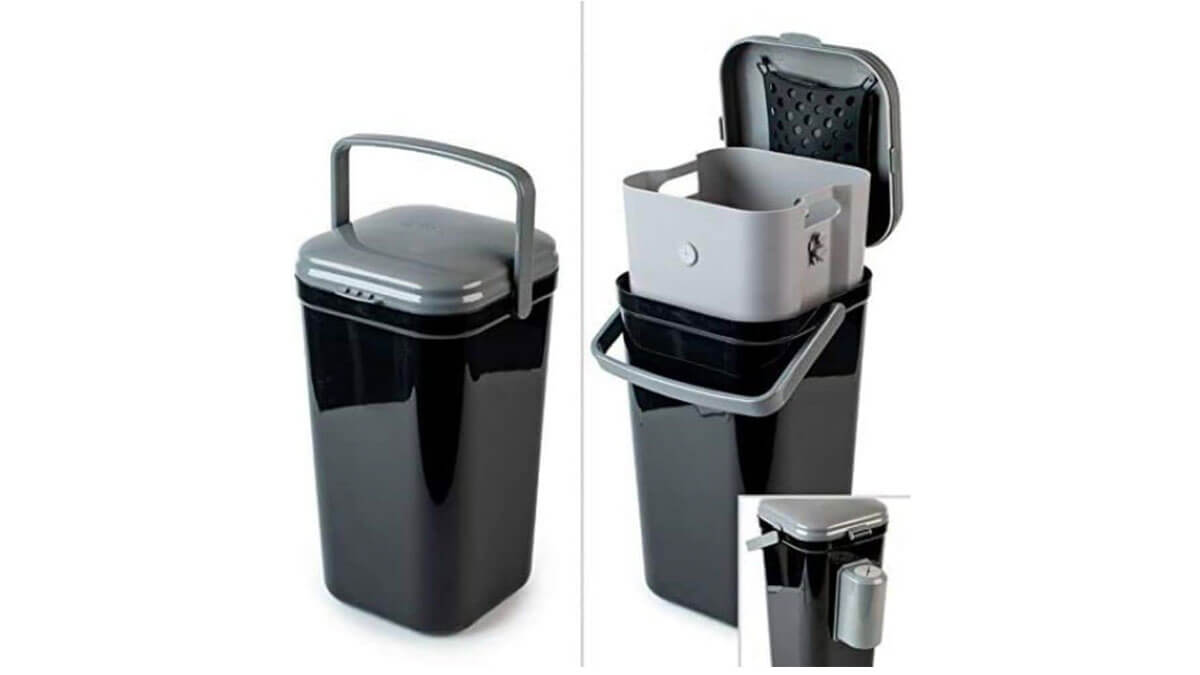
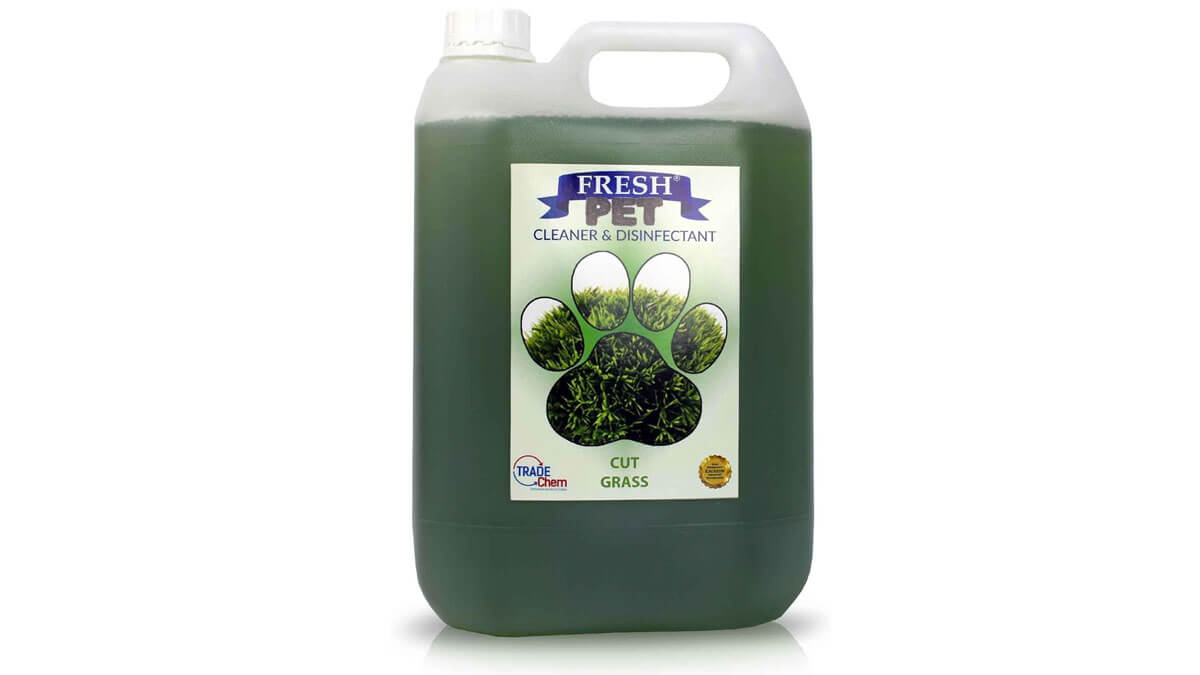
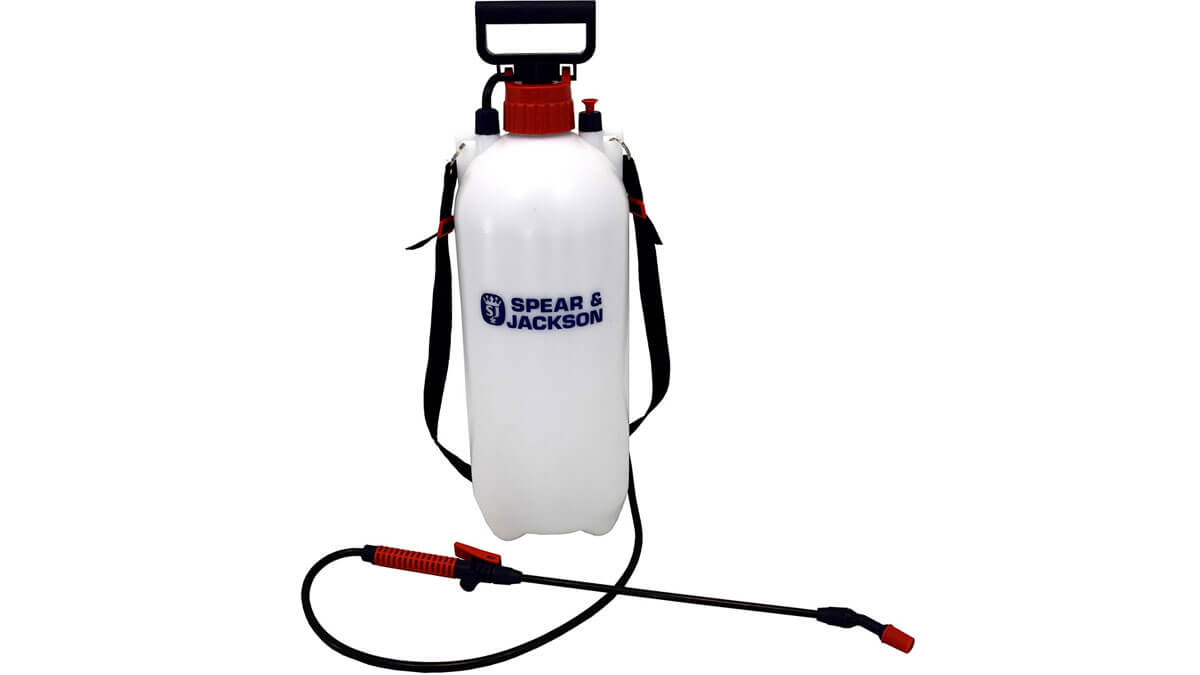
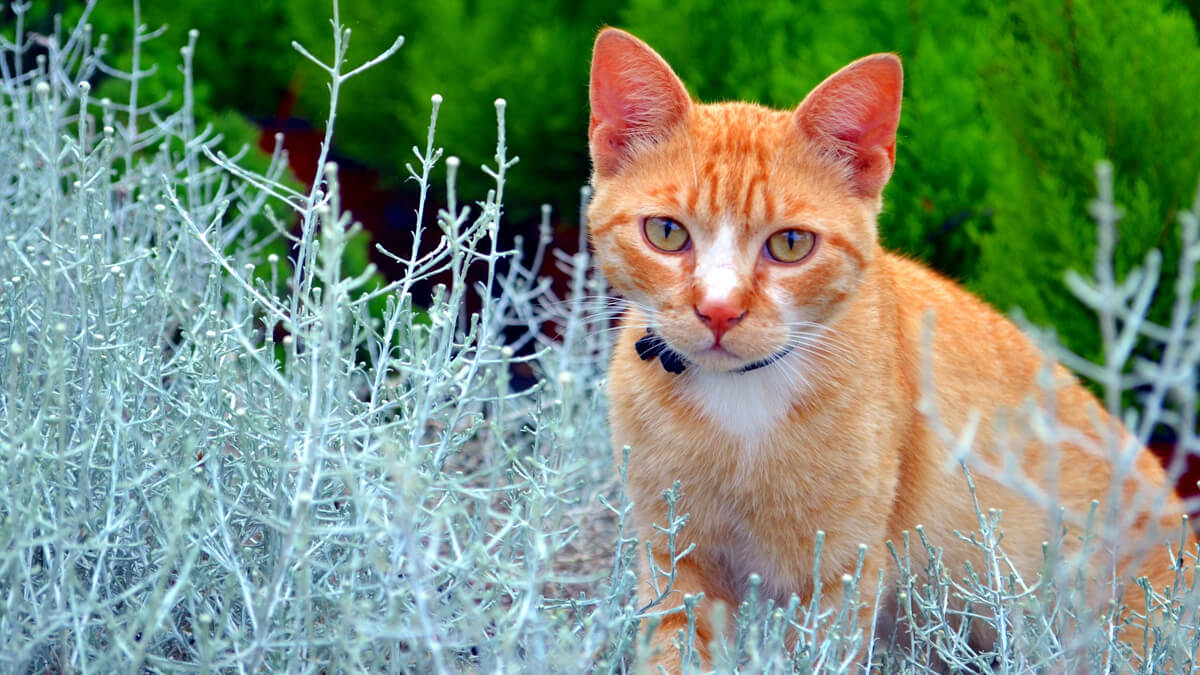
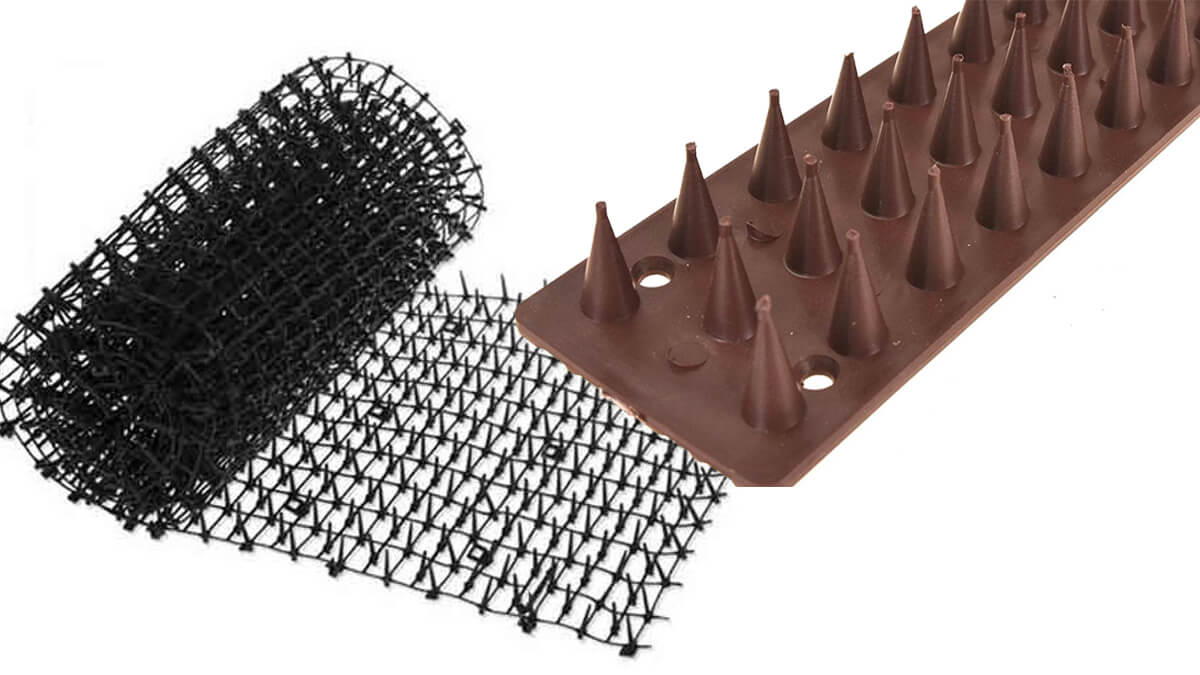
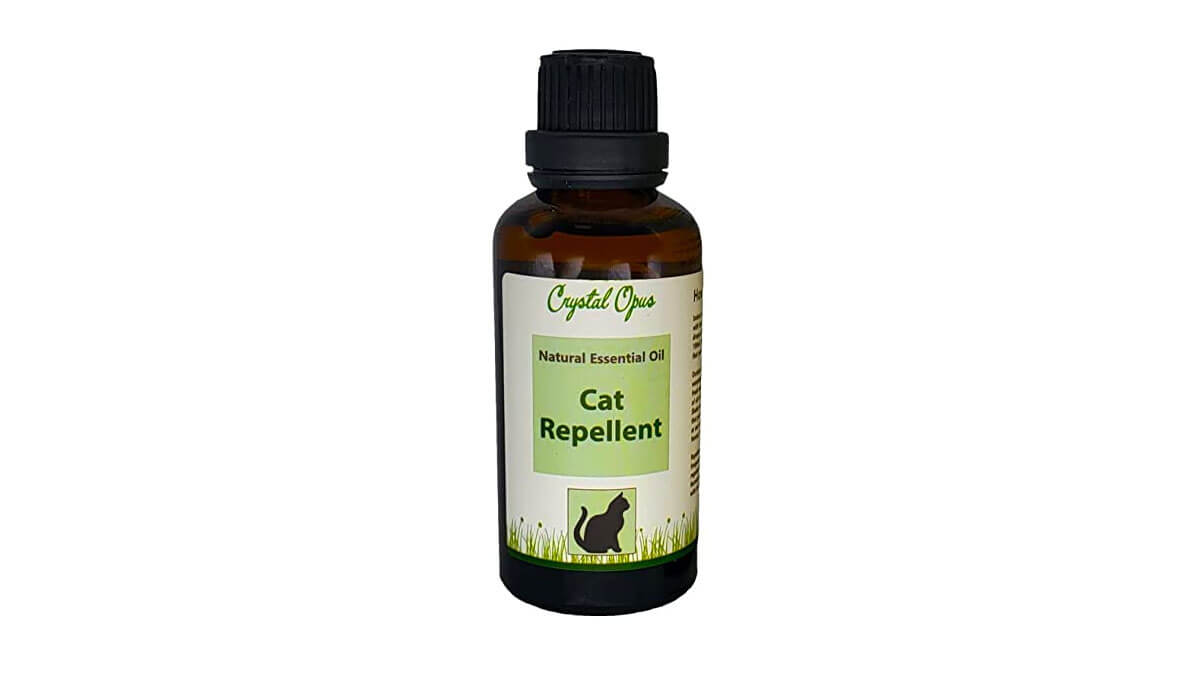
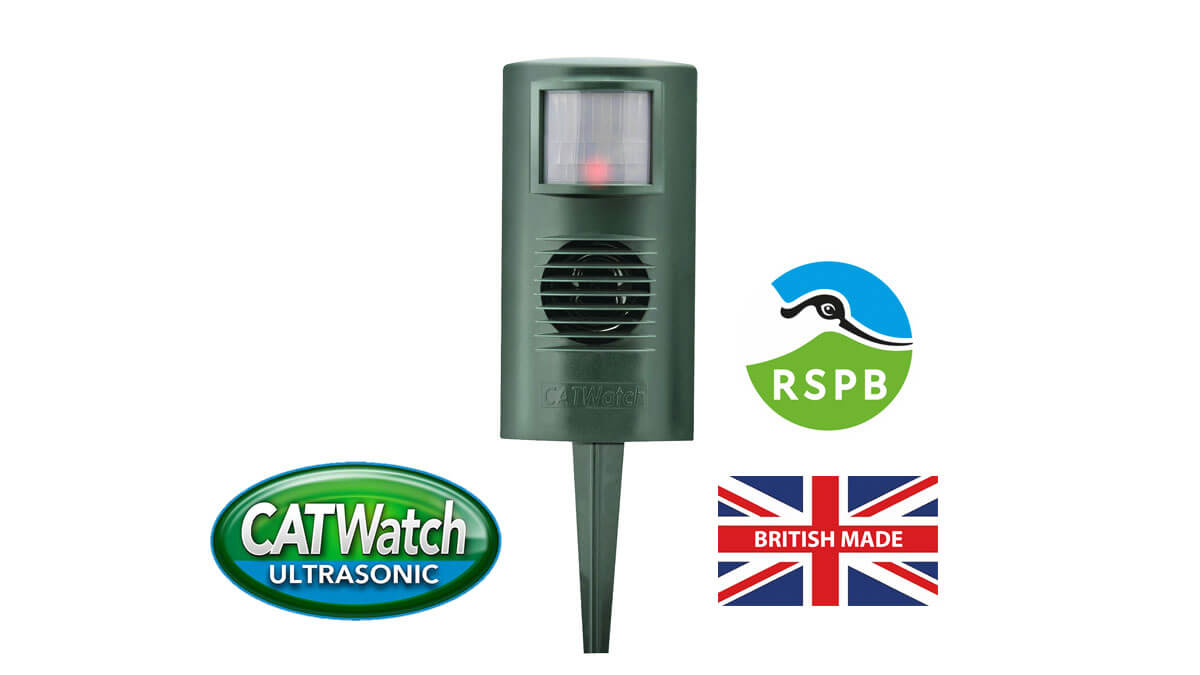
 Photo credit: Pixabay
Photo credit: Pixabay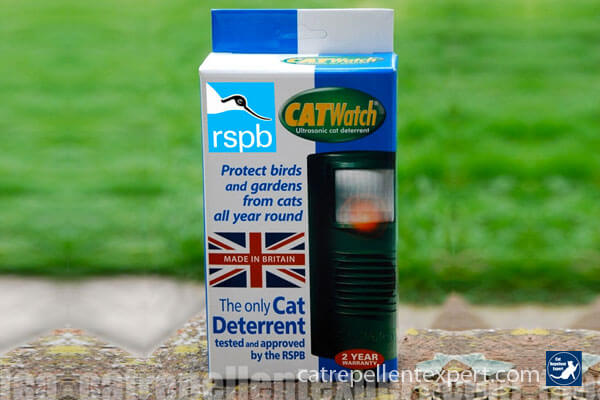
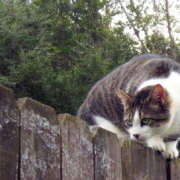 Photo credit: Sheila Shafer-Roberson / Pixabay
Photo credit: Sheila Shafer-Roberson / Pixabay




